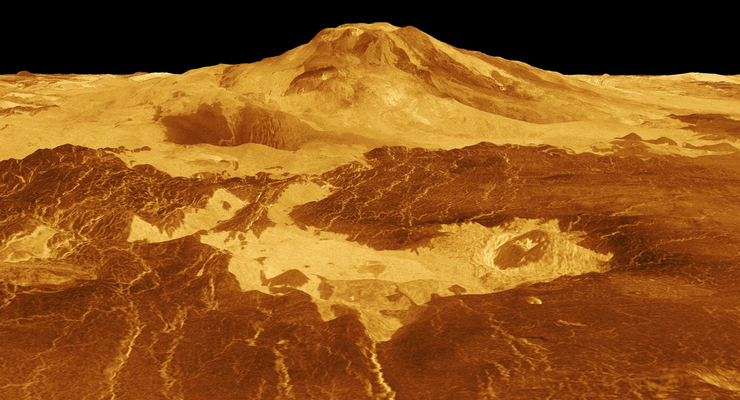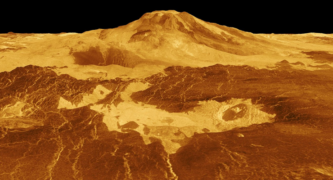
Direct geological evidence of recent volcanic activity has been observed on the surface of Venus for the first time. Scientists made the discovery after poring over archival radar images of Venus taken more than 30 years ago, in the 1990s, by NASA’s Magellan mission, managed in Pasadena by JPL.
The images revealed a volcanic vent changing shape and increasing significantly in size in less than a year.
Scientists study active volcanoes to understand how a planet’s interior can shape its crust, drive its evolution, and affect its habitability. One of NASA’s new missions to Venus will do just that. Led by the agency’s Jet Propulsion Laboratory in Southern California, VERITAS – short for Venus Emissivity, Radio science, InSAR, Topography, And Spectroscopy – will launch within a decade. The orbiter will study Venus from surface to core to understand how a rocky planet about the same size as Earth took a very different path, developing into a world covered in volcanic plains and deformed terrain hidden beneath a thick, hot, toxic atmosphere.
“NASA’s selection of the VERITAS mission inspired me to look for recent volcanic activity in Magellan data,” said Robert Herrick, a research professor at the University of Alaska Fairbanks and member of the VERITAS science team, who led the search of the archival data. “I didn’t really expect to be successful, but after about 200 hours of manually comparing the images of different Magellan orbits, I saw two images of the same region taken eight months apart exhibiting telltale geological changes caused by an eruption.”
Herrick teamed up with JPL’s Scott Hensley, the project scientist for VERITAS and a specialist in analyzing radar data like Magellan’s. The two researchers created computer models of the vent in various configurations to test different geological-event scenarios, such as landslides. From those models, they concluded that only an eruption could have caused the change.
“Only a couple of the simulations matched the imagery, and the most likely scenario is that volcanic activity occurred on Venus’ surface during Magellan’s mission,” said Hensley. “While this is just one data point for an entire planet, it confirms there is modern geological activity.”
The scientists liken the size of the lava flow generated by the Maat Mons activity to the 2018 Kilauea eruption on the Big Island of Hawaii.
Magellan’s Legacy
Herrick, Hensley, and the rest of the VERITAS team are eager to see how the mission’s suite of advanced science instruments and high-resolution data will complement Magellan’s remarkable trove of radar imagery, which transformed humanity’s knowledge of Venus.
“Venus is an enigmatic world, and Magellan teased so many possibilities,” said Jennifer Whitten, associate deputy principal investigator of VERITAS at Tulane University in New Orleans. “Now that we’re very sure the planet experienced a volcanic eruption only 30 years ago, this is a small preview for the incredible discoveries VERITAS will make.”
VERITAS will use state-of-the-art synthetic aperture radar to create 3D global maps and a near-infrared spectrometer to figure out what the surface is made of. The spacecraft will also measure the planet’s gravitational field to determine the structure of Venus’ interior. Together, the instruments will offer clues about the planet’s past and present geologic processes.
And whereas Magellan’s data was originally cumbersome to study – Herrick said that in the 1990s they relied on boxes of CDs of Venus data that were compiled by NASA and delivered in the mail – VERITAS’ data will be available online to the science community. That will enable researchers to apply cutting-edge techniques, such as machine learning, to analyze the planet and help reveal its innermost secrets.
Those studies will be complemented by EnVision, an ESA (European Space Agency) mission to Venus slated for launch in the early 2030s. The spacecraft will carry its own synthetic aperture radar (called VenSAR), which is being developed at JPL, as well as a spectrometer similar to the one VERITAS will carry. Both Hensley and Herrick are key members of the VenSAR science team.














 0 comments
0 comments


